Pigs develop anaemia when, for some reason or other, their blood is incapable of carrying enough oxygen to tissues and organs. Lactating piglets are most affected by anaemia due to iron deficiency. Anaemia negatively impacts body condition, immune response, and animal welfare. For the pig farmer, this translates as lower daily gains and losses from disease
Causes of Anaemia in Pigs
The main cause of anaemia in piglets is iron deficiency. Iron is part of a protein called haemoglobin, which red blood cells need to carry oxygen from the lungs to the rest of the body. Piglets are at risk of developing iron deficiency anaemia because they are born with levels that last them just a few days (around 50 mg).
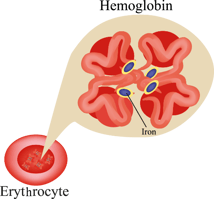 By week 3, this fast-growing animal will require 300 to 400 mg of iron! Up to 40% of piglets are farrowed with suboptimal levels of iron. By weaning, over a third have become iron deficient. In a recent survey in mayor pig-producing European countries, over 46% of pigs were sub anaemic, over 16% were anaemic.
By week 3, this fast-growing animal will require 300 to 400 mg of iron! Up to 40% of piglets are farrowed with suboptimal levels of iron. By weaning, over a third have become iron deficient. In a recent survey in mayor pig-producing European countries, over 46% of pigs were sub anaemic, over 16% were anaemic.
In nature, piglets would obtain iron from the soil, but in the commercial farms natural source of iron is very limited. However, neither colostrum nor milk provide enough to fulfil the piglets’ daily requirement of 7-16 mg/day. To put things in context, a litre of sow milk contains around 1.5 mg of iron. As a rule of thumb, sows can provide only 10-20% of a piglet’s daily requirement.
Heavier and faster-growing pigs are at a greater risk of developing anaemia for the simple reason that they require more iron quicker. Paradoxically, smaller, weaker piglets are also at an increased risk because they might have a harder time nursing. Pigs from larger litters are also prone to this mineral deficiency since the foetal stores of iron are even more limited and there is less milk (and therefore less iron) for each individual suckling.
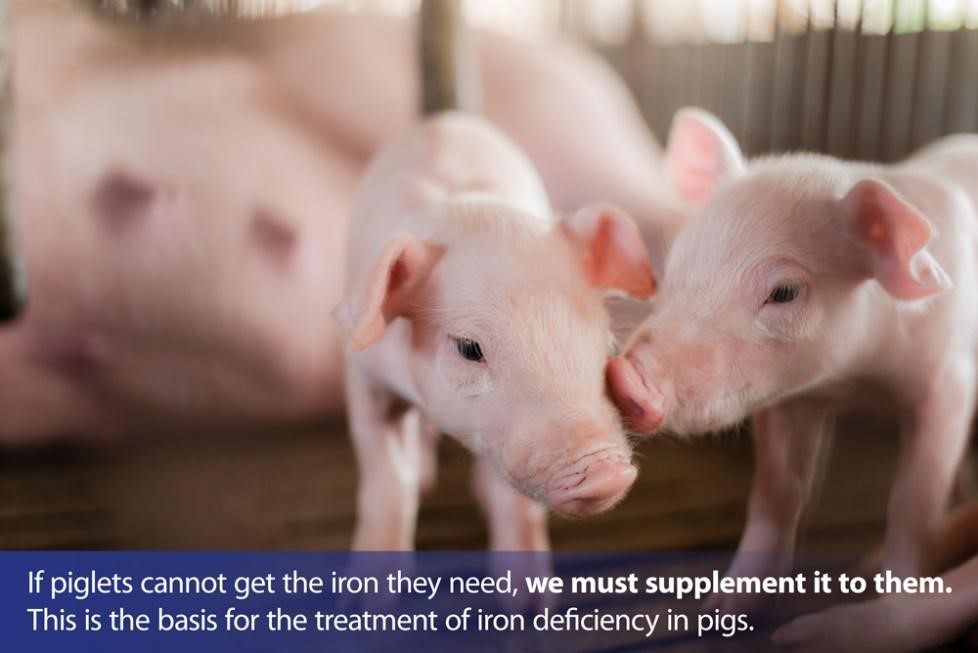
Diagnosis of Anaemia in Pigs
Signs that a piglet may be iron deficient include:
- Ill-thrift
- Poor weight gain
- Paleness of the mucosae
Because this type of anaemia is also associated with higher risk of infections, affected piglets are likely to develop diarrhoea.
Respiratory infections can also be an issue, but because of the reduced oxygen-carrying capacity of anaemic pigs’ blood, the most frequent clue is that they breathe a lot faster just to keep up, a clinical sign called tachypnoea.
Severe cases die quickly and, at necropsy, will have:
- Oedema in the lungs, muscles and joints.
- Thin heart walls.
Oedema occurs when liquid ‘leaks out’ of blood vessels and is a common feature of many circulatory and blood problems. Anaemic piglets that make it to weaning and die soon thereafter have an enlarged heart. This happens because it had to pump a much larger blood volume to meet the body’s oxygen demands.
We should take a step back! If you are seeing these clinical signs in your litters, or lower-than-expected performance, the first question you should ask is: have I supplemented my piglets with iron? If the answer is ‘no’, iron deficiency anaemia is likely to be the underlying problem.
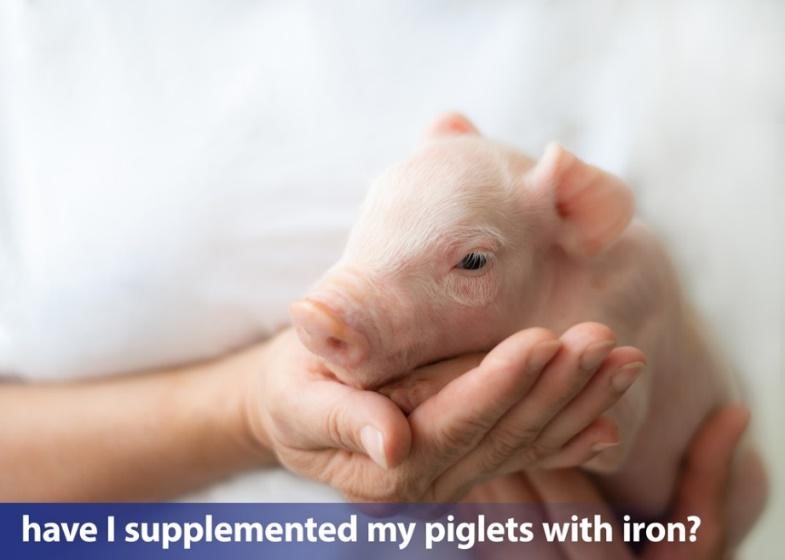
Anaemic pigs represent an obvious loss to farmers. But equally concerning are subanaemic pigs, meaning those that, though not displaying clinical signs, never acquire sufficient levels of iron. Subanaemic pigs are harder to detect and yet they are detrimental to profits through lacklustre performance and susceptibility to disease. Subanaemic pigs are common, even among those farms where iron supplementation is routinary.
HemoCue® is a portable, commercial analyser that measures haemoglobin levels.

With this tool, farmers and veterinarians can detect anaemic and subanaemic pigs, and thus provide early treatment of iron deficiency and evaluate the effectiveness of prevention programs. Pigs with haemoglobin values below 11 g/dl should be considered subanaemic; those below 9 g/dl are anaemic. Piglets not supplemented iron by day 6 can drop to 7 g/dl of haemoglobin!
Commercial Impact
Prevention and treatment of iron deficiency in pigs is an economically sound decision. Anaemic piglets have a lower average daily weight gain, higher risk of infectious disease and, therefore, increased mortality. These losses are all too evident to every farmer.
The commercial impact of subanaemic pigs might be a bit harder to grasp. These animals will have a suboptimal performance and lower value because of their rough hair, coarse aspect, wrinkled skin, and lower final weight. Faster-growing pigs are at a greater risk of iron deficiency. To keep up with faster growth rates, improved stock has higher nutritional requirements. Failing to provide adequate iron levels simply saps all the benefits accrued from years of breeding and research, not to mention all your hard work.
Therefore, prevention of iron deficiency in pigs by supplementation should be on every farmer’s checklist.
Prevention & Treatment of Piglet Anaemia
To prevent iron deficiency in pigs and avoid the heavy losses this can cause, supplementation is necessary during the first 3 days of life.
As already noted, piglets are born with very little iron (around 50 mg) and will go through those reserves sometimes as soon as day 3 after farrowing.
This stat should worry every farmer: considering that nearly of 40 % of piglets are born with latent or overt iron deficiency, modern pig production systems have no choice but to provide iron through supplementation.
Farmers can supplement iron to their pigs in two ways: orally or by injection. Which is best?
Iron concentration in colostrum and milk does not increase with supplementation to the sow. Regardless, a well-balanced diet should be provided to all breeding stock. It should be mentioned that young and old sows are at a higher risk of farrowing iron-deficient piglets.
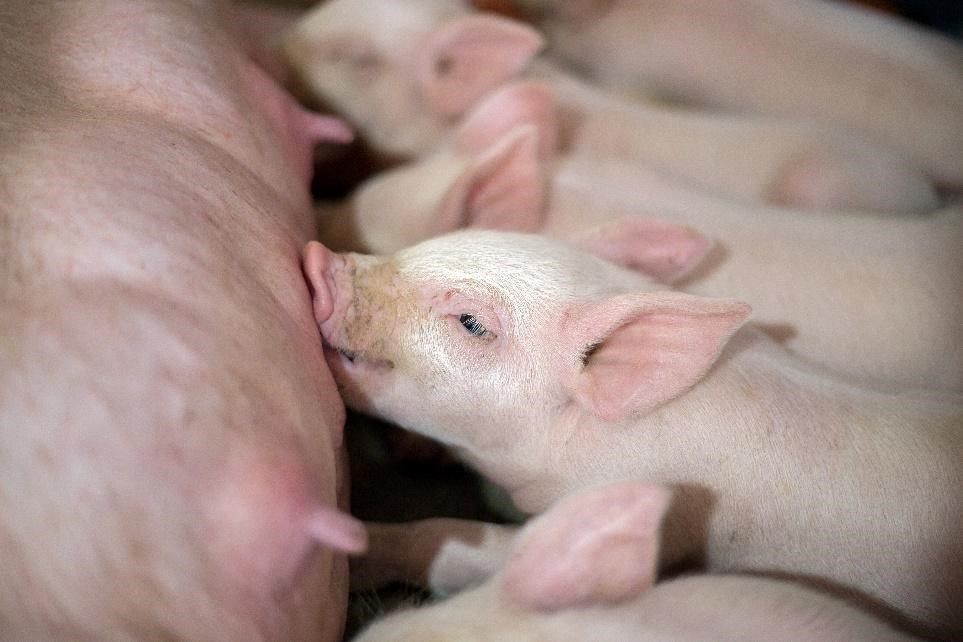
There are oral iron supplements for piglets. These are usually less effective in the prevention of iron deficiency in pigs. When using oral products, care should be taken to provide several doses during the first two weeks of life, one is not enough. The oral route has the drawback that, when provided in feed and water, dosage is imprecise and pigs that need iron the most may get the least. Important factor is immaturity of intestinal mucosa and consequent very limited absorption of orally administered iron during the first days of life.
Overall, the most effective way to supplement iron is by injecting it.
This has been proven to provide some of the best prevention and treatment of anaemia in pigs. When performed according to guidelines, iron injections are safe. But more than a few farmers are wary of reactions at the injection site; to reduce the risk, veterinarians often recommend waiting until day 3 to give piglets their first iron shot, when their store of antioxidants is recovered by sufficient intake of colostrum and milk. Always ask your vet and follow product leaflet instructions carefully!
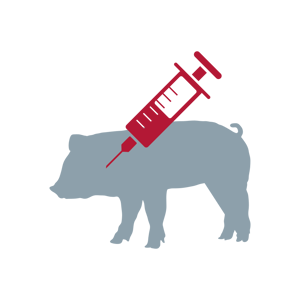 The greatest benefit of injecting your piglets with iron is that you can be confident that it got the right dose, there is no second guessing.
The greatest benefit of injecting your piglets with iron is that you can be confident that it got the right dose, there is no second guessing.
From a management standpoint, minimising handling is the smart thing to do. A single dose of gleptoferron for instance, can effectively prevents iron deficiency in pigs.
As an added perk, some gleptoferron products contain toltrazuril, which is effective against Coccidia, one of the main causes of diarrhoea in lactating piglets. With this convenient solution, you can reduce labour costs as well as losses from anaemia and coccidiosis.
Treatment of iron deficiency in pigs is all about prevention. We can prevent anaemic and subanaemic piglets with something as simple and cost-effective as supplementation.
Give your piglets a better shot!
